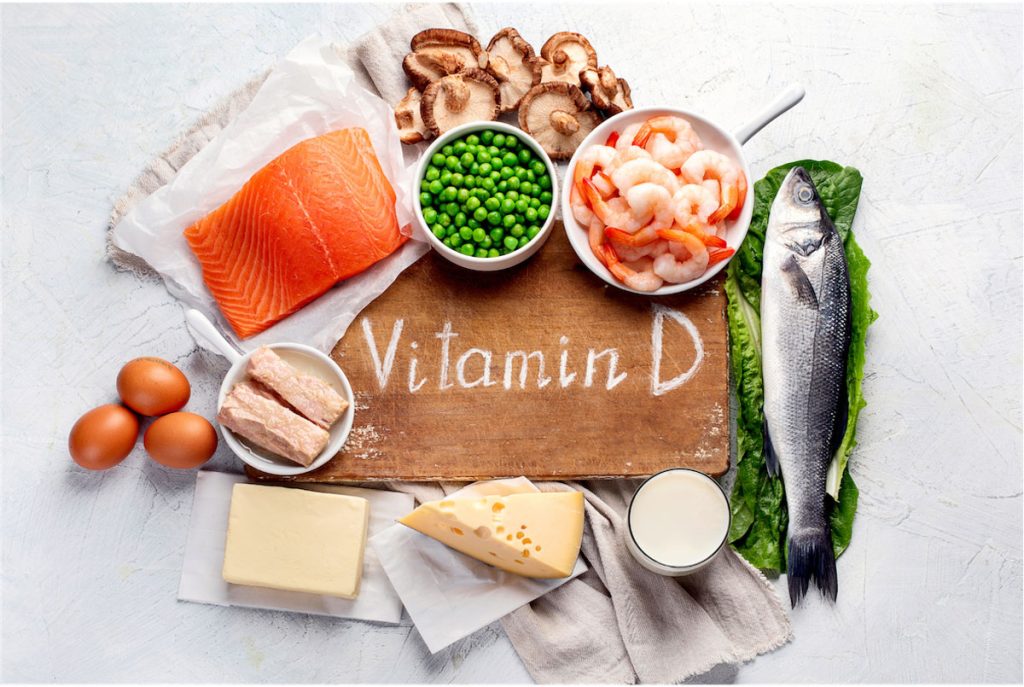When it’s winter, many of us find ourselves bundled up indoors basking in the warmth of our homes. While winter brings a sense of coziness, it also brings a risk of Vitamin D deficiency.
Is there really a link between the winter season and Vitamin D deficiency? Let’s dive into the science behind this winter conundrum.
Understanding Vitamin D
Vitamin D is your “sunshine vitamin,” and it plays a crucial role in maintaining your overall health. Vitamin D is essential for strong bones, a robust immune system, and a myriad of bodily functions.
The Winter Challenge
During winter, the days become shorter, and the sun’s rays are less direct. This reduction in sunlight exposure can be a cause for concern. Why? Because the primary natural source of Vitamin D for our bodies is sunlight.
When sunlight connects with our skin it triggers the production of Vitamin D. When our skin receives less sunlight, it can lead to a drop in Vitamin D levels.
Factors Contributing to Vitamin D Deficiency
- Sun exposure: With colder temperatures and shorter days, people tend to spend less time outdoors.
- Location: Individuals living in northern regions, where sunlight is scarce during the winter months, may face a higher risk of Vitamin D deficiency causing negative health conditions.
- Food you can eat: Although sunlight is a primary source, Vitamin D is obtained from certain foods and supplements like fatty fish, cod liver oil, eggs, and fortified products. However, these may not be sufficient to meet the body’s needs, especially during winter.

Vitamin D Deficiency Symptoms
- Bone Health Issues: Vitamin D is vital for calcium absorption, contributing to strong and healthy bones. Deficiency can lead to conditions like osteoporosis and rickets.
- Weakened Immune System: Adequate levels of Vitamin D support a robust immune system and a deficiency may increase the risk of infections and illnesses.
- Mood Disorders: Some studies suggest a link between low Vitamin D symptoms and levels and mood disorders like seasonal affective disorder (SAD) during the winter months.
The exact cause of SAD is not fully understood, but it is commonly linked to a lack of sunlight exposure during the cooler months. Reduced sunlight exposure can affect your body’s internal clock (circadian rhythm) and disrupt the production of certain neurotransmitters, such as serotonin and melatonin, which play a role in mood regulation and sleep-wake cycles.
8 Great Food Sources of Vitamin D

Vitamin D is essential for maintaining healthy bones and a strong immune system. While sunlight is a primary source of Vitamin D, certain foods can contribute to your overall intake, like these:
- Fatty Fish: Fatty fish such as salmon, mackerel, trout, sardines, and tuna are excellent sources of Vitamin D. Aim to include these fish in your diet regularly.
- Cod Liver Oil: This oil is rich in Vitamin D and also contains omega-3 fatty acids. It’s available as a supplement if you don’t consume fish regularly.
- Egg Yolks: Egg yolks contain Vitamin D, but the amount can vary. If you’re looking to increase your Vitamin D intake, consider choosing eggs that are labeled as high in Vitamin D or omega-3 enriched.
- Mushrooms: Some types of mushrooms, especially those exposed to sunlight or UV light during growth, can contain Vitamin D. Check labels or choose varieties like maitake or chanterelle.
- Fortified Foods: Many foods are fortified with Vitamin D, meaning the vitamin is added during processing. Common examples include fortified dairy products (milk, yogurt, and cheese), orange juice, and breakfast cereals.
- Fortified Plant-Based Milk: Plant-based milk alternatives like soy milk, almond milk, and oat milk are often fortified with Vitamin D, making them suitable options for individuals with dietary restrictions.
- Beef Liver: Beef liver is a good source of various nutrients, including Vitamin D. However, it’s essential to consume it in moderation due to its high vitamin A content.
- Cheese: Some types of cheese, particularly Swiss and cheddar, contain small amounts of Vitamin D. However, the levels are generally lower compared to other food sources.
While the winter season can indeed contribute to Vitamin D deficiency, it’s important to recognise that various factors play a role. Maintaining a balance between sun exposure, diet, and, if necessary, supplements is key to ensuring optimal Vitamin D levels throughout the year. So, this winter, don’t forget to catch a few rays when the sun peeks through, and consider including Vitamin D-rich foods in your diet for a healthier, happier you.
That’s why Smith Biomed provides an affordable and easy to use home test Vitamin D Deficiency Test that can be purchased at leading pharmacies. A Vitamin D Test Kit is easy to use, and should you test positive we recommend you then discuss your treatment options with a health professional.

